Twenty-five and counting: Vanderbilt University continues to expand its green building certifications
THINGS TO KNOW:
- Vanderbilt University now has 25 LEED certified buildings
- Vanderbilt has PETAL and WELL-designed buildings (certifications pending)
- The Commons was the first set of buildings to receive LEED certification on campus
- When certified, Nicholas S. Zeppos Residential College will be Vanderbilt’s first Platinum LEED-certified building
- In 2020, Vanderbilt was honored with the 2020 Leadership Award from the U.S. Green Building Council
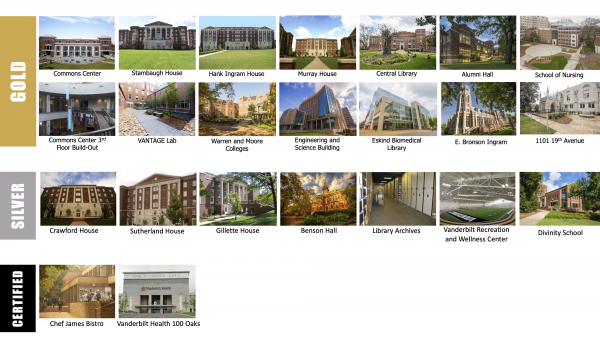
When Vanderbilt University constructed its first building in 1875, it was efficiently designed for multipurpose use—with classrooms, laboratories, library, museum and chapel under one roof. As architect William Crawford Smith designed Kirkland Hall, then known as Main Building, he employed the use of flexible spaces, which is one of the tenets of sustainably designed buildings still in use today. His flexible design and construction stood the test of time as Kirkland Hall morphed its identity over the years.
Today, the university builds on Smith’s legacy by keeping sustainability at the forefront of its design process for new buildings—and when evaluating existing buildings.
LEADERSHIP IN ENERGY AND ENVIRONMENTAL DESIGN (LEED)
 LEED, the world’s most widely used green building rating system, is managed by the U.S. Green Building Council.
LEED, the world’s most widely used green building rating system, is managed by the U.S. Green Building Council.
LEED is broken down by a set of goals:
- Reduce contribution to global climate change
- Enhance individual human health
- Protect and restore water resources
- Protect and enhance biodiversity and ecosystem
- Promote sustainable and regenerative materials
- Enhance community quality of life
The Commons
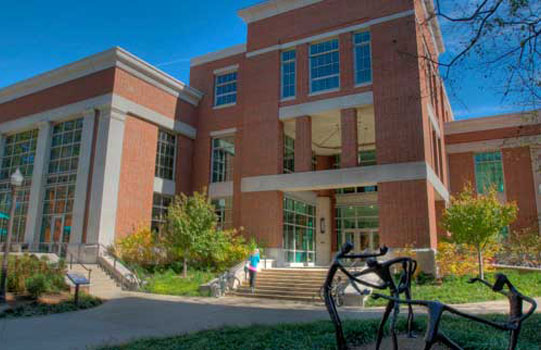
In 2009 Vanderbilt opened the doors to its first set of LEED-certified buildings. The Commons has seven LEED-certified buildings, four Gold and three Silver. When unveiled, this project made history as the largest collection of LEED-certified buildings in Tennessee.
Nicholas S. Zeppos Residential College
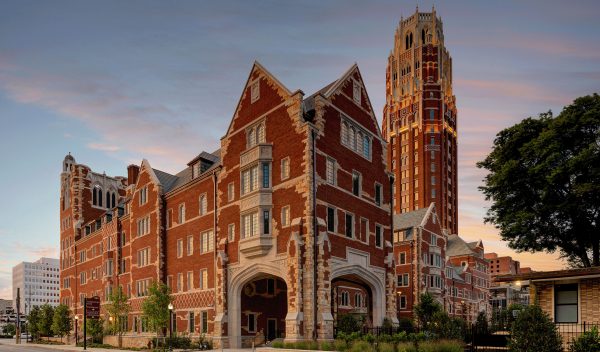 Vanderbilt is preparing to drop another pin in its historical timeline with its first Platinum LEED building. Nicholas S. Zeppos Residential College, named after Chancellor Emeritus Nicholas S. Zeppos, welcomed students home in 2020. But long before the building opening, Vanderbilt leadership and project managers began preparing to build the university’s first LEED Platinum building (certification pending).
Vanderbilt is preparing to drop another pin in its historical timeline with its first Platinum LEED building. Nicholas S. Zeppos Residential College, named after Chancellor Emeritus Nicholas S. Zeppos, welcomed students home in 2020. But long before the building opening, Vanderbilt leadership and project managers began preparing to build the university’s first LEED Platinum building (certification pending).
For a building to achieve a LEED Platinum certification, it must earn 80+ points from the USBGC.
Zeppos College is set to achieve this certification through design elements such as:
- Sustainable sites, such as green and open spaces, inside and surrounding the building
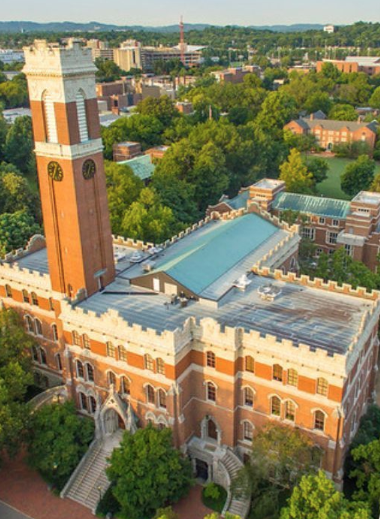
- Increased natural light throughout the building and campus views from regularly occupied areas
- Proximity to modes of transportation such as the nearby bike racks and the WeGo and VandyRide bus stops
- Regionally sourced materials used in the design and construction
- Products developed with recycled content such as the carpeting, floors in the restrooms and metal studs and concrete blocks used in the structure
- High-efficiency flush and low-flow plumbing fixtures to reduce potable water use
- Overall energy performance
Learn more about the design elements it takes to earn a Platinum LEED certification.
PETAL AND WELL BUILDINGS
Vanderbilt has two other types of sustainably designed buildings: WELL and PETAL (certifications pending).
VANDERBILT UNIVERSITY SCHOOL OF NURSING
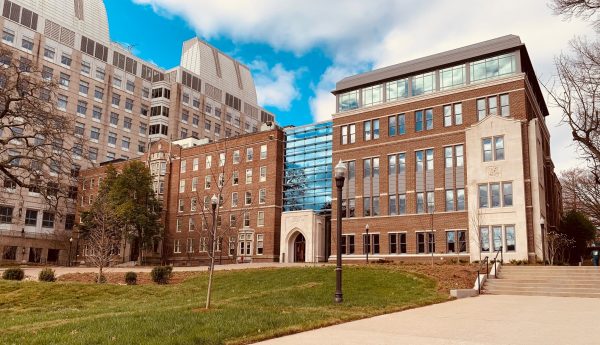 Health and well-being were at the forefront of the design process for the Vanderbilt University School of Nursing, which was completed in 2019. The building was designed to achieve not only LEED Gold certification, but also WELL Silver certification (certification pending).
Health and well-being were at the forefront of the design process for the Vanderbilt University School of Nursing, which was completed in 2019. The building was designed to achieve not only LEED Gold certification, but also WELL Silver certification (certification pending).
The WELL Building Standard is a performance-based system of measuring, certifying and monitoring features that affect human health and well-being in a built environment, including air quality, water, nourishment, light, fitness, comfort and mind.
Explore this interactive map of the building >>
THE CONNECTOR BUILDING
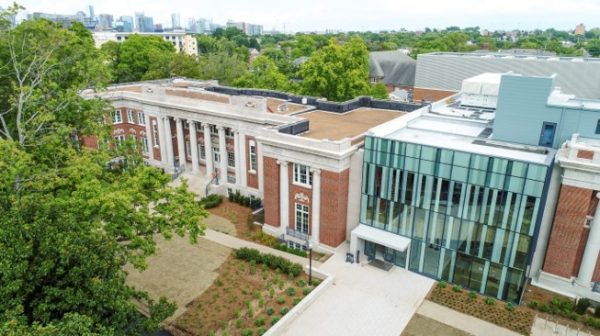
The Connector Building, which is between the newly renovated One Magnolia and Mayborn Buildings on the Peabody campus, was strategically designed to achieve a LEED certification and Vanderbilt’s first Living Building Challenge PETAL certification for materials (certifications pending).
To qualify for a PETAL certification, administered by the International Living Future Institute, a building must be designed to:
- Sourcing materials that are Red List free
- Tracking embodied carbon from construction
- Using salvaged materials and responsibly sourced wood and stone
- Striving to eliminate waste during construction
- Sourcing materials from local industries
In the Connector Building, there are a series of educational signs to highlight the sustainable elements that qualify it as a PETAL-certified building.
THE FUTURE
The university has many buildings with various certifications pending:
- Nicholas S. Zeppos Residential College
- Rothschild Residential College
- Kirkland Hall
- 17th and Horton
- Engineering and Science Building (fifth and sixth floors)
- Owen Graduate School of Management
Additional information will be released as the university earns LEED, WELL and PETAL certifications.
